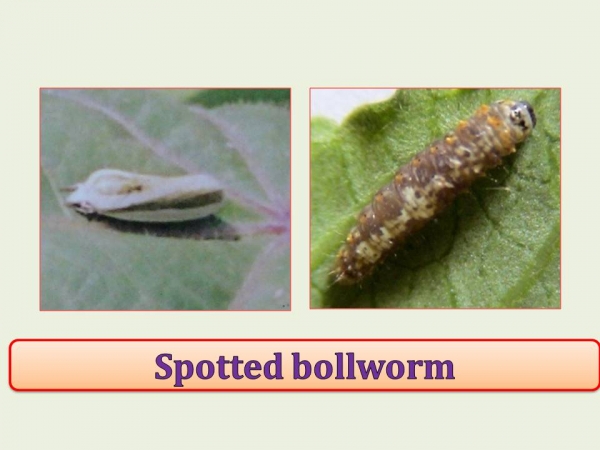
Nature of damage:
-----------------
The first and second instar larvae feeds gregariously on the leaf lamina by scraping the tissues and this area subsequently dries.
They nibble the leaf, leaving upper surface intact with transparent membrane. Later on they disperse and feeds on the leaves.
Later instars are voracious feeders. In case of heavy infestation eat away entire leaf lamina, leaving only the main veins.
Then after they bore into square, flowers, and bolls also.
Larvae are nocturnal and cause damage during late evening till early morning.
During day time they hide in cracks, frass material and wet soil around the stem of the plant.
Castor is the most preferred host for egg laying and feeding with shorter life cycle and higher fecundity.
Management :
------------
Use of light trap or pheromone trap to monitor the emergence of moths.
Removal and destruction of egg masses, gregarious first and second instar larvae and full grown larvae.
Deep ploughing of field in summer helpful in reducing population in next season as the pupae expose to sunlight and natural enemies.
Spray Spodoptera NPV suspension @ 250 LE/ha during evening hours.
Quinalphos 25 % EC @ 2 litres + DDVP 76% - 375 ml should be mixed 1000 litres of water and sprayed on plants and soil. Chlorpyriphos 20% EC @ 3-4 litres per hectare.
Chlorpyriphos 20% EC 1.8 litres + fenitrothion 50% EC 625 ml Emmamectin benzoate 5% WSG (proclaim) 0.001% @ 2 gram/10 lit water. Diflubenzuron 25% WP – 0.04% - 16 gm/ 10 lit of water.
Spray synthetic pyrethroids cypermethrin 25 % EC 0.009% - 3- 4 ml/10 lit water, or deltamethrin 2.8% EC 0.009% - 5 ml/ 10 lit water.

